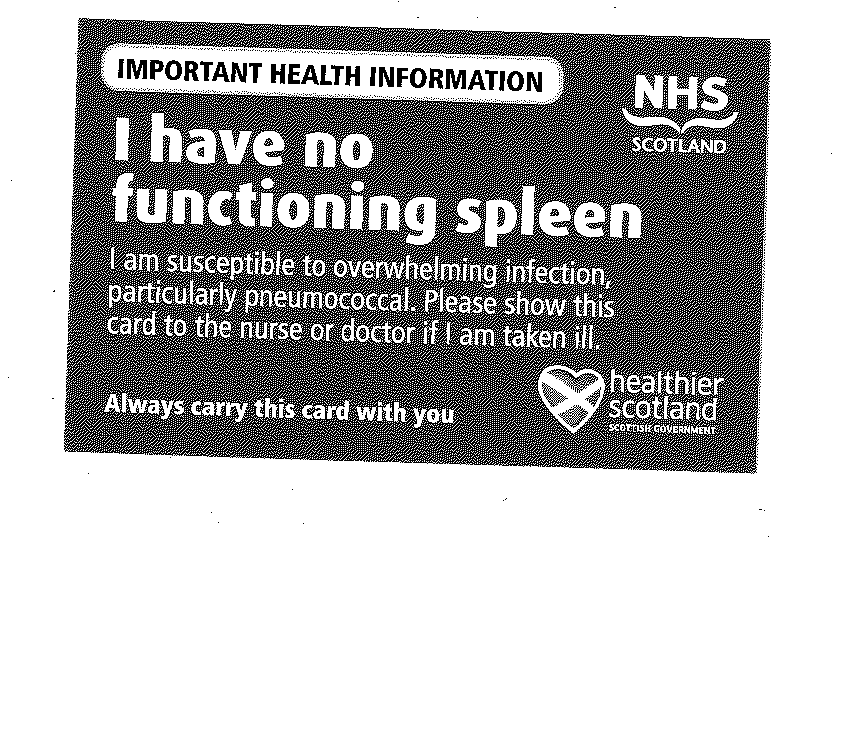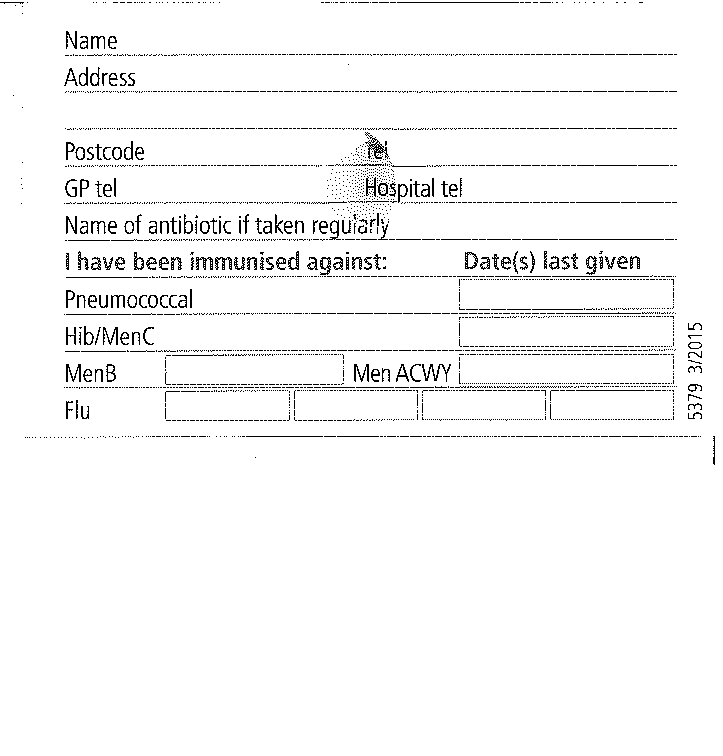- Pneumococcal. Streptococcus pneumoniae is a bacterial pathogen that affects children and adults world-wide. The organism colonises the upper respiratory tract, but severe infection can result from dissemination of the bacteria into the bloodstream and the central nervous system. Asplenic individuals are at the highest risk from pneumococcal infection due to reduced clearance of encapsulated bacteria from the bloodstream. Children in this group are at particular risk of fulminant pnemococcal sepsis and subsequent high mortality. Where possible, the vaccine should be given, together with advice about the increased risk of pneumococcal infection, four to six weeks (but at least two weeks) before splenectomy or the initiation of chemotherapy or other immunosuppressive treatment. In the case of splenectomy following trauma there is evidence that better functional antibody responses seems to occur if vaccination is delayed for 14 days after surgery. 12
Revaccination: Antibody levels are likely to decline rapidly in individuals who have asplenia or splenic dysfunction and therefore revaccination with 23-valent PPV is recommended every five years. Testing of antibodies prior to vaccination is not required.13
- Hib and meningococcal. Asplenic/hyposplenic children and adults may be at increased risk of invasive disease caused by Haemophilus influenzae type b, and meningococci, and require appropriate immunisation, as per summary table below.
- Influenza. In asplenic/hyposplenic patients, influenza vaccination is associated with a 54% reduced risk of death compared to unimmunised asplenic persons14. Annual vaccination against influenza is recommended, preferably in September. Asplenic/hyposplenic individuals are not thought to be at more risk of catching influenza but vaccination may reduce the risk of secondary bacterial infection.
In practice it is difficult to know whether some individuals (e.g. those with coeliac syndrome) are hyposplenic, as there is no readily available diagnostic test, and to some extent it therefore depends on clinical judgement.
In the absence of evidence of hyposplenia, only influenza and pneumococcal vaccines are recommended for those with coeliac syndrome.


